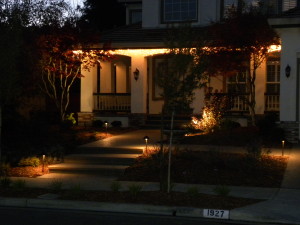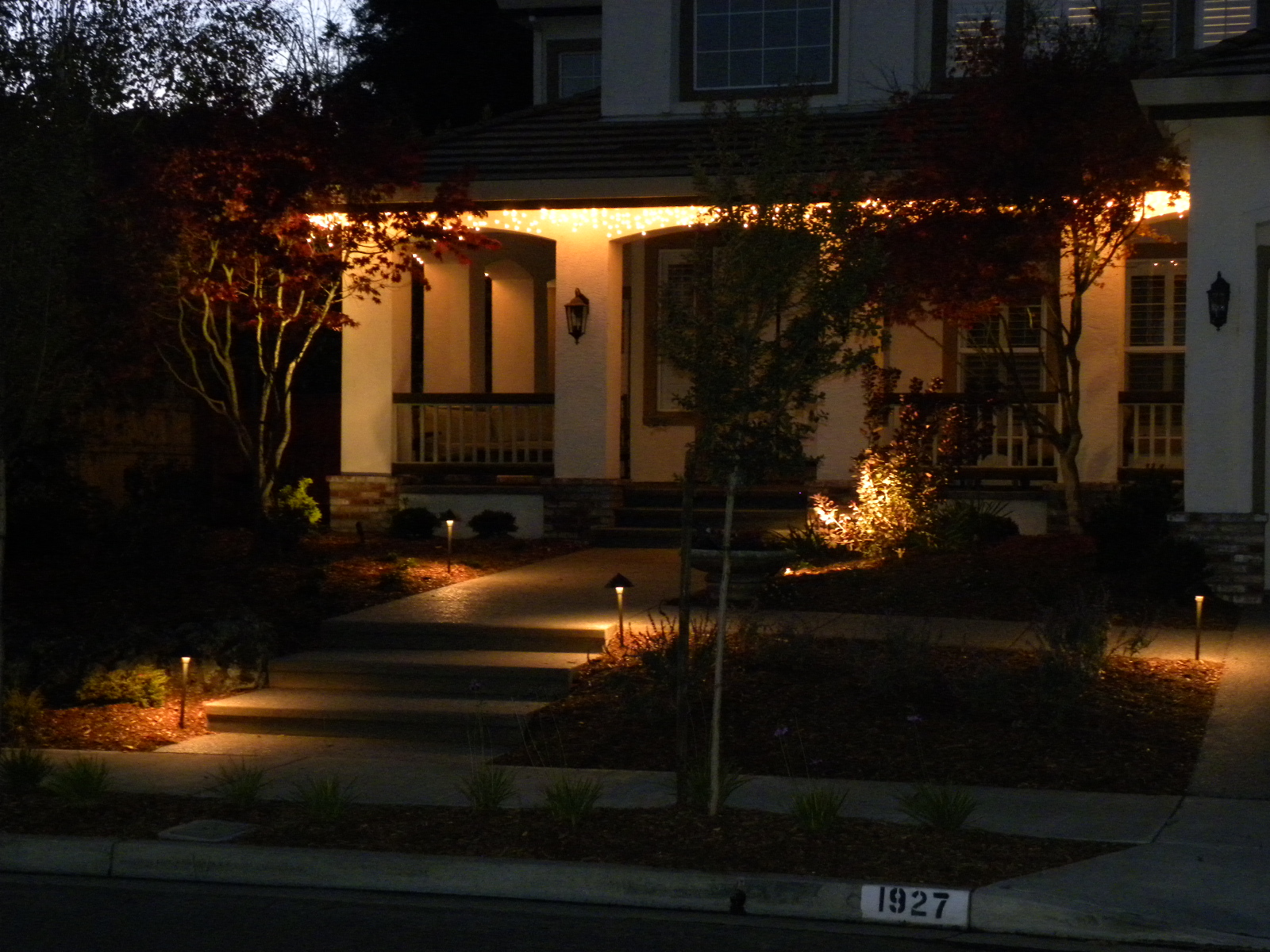An awesome element to add evening drama to a garden is low voltage lighting. When the colors and textures fade with the late afternoon sun, and darkness covers the landscape, lighting highlights and accents various plants and features.
A low voltage lighting system consists of a transformer with a timer, path lights and/or up lights and down lights, and lighting wire. The transformer converts 110v. house current to 220v. low voltage current. It must be plugged into an electrical outlet and the built in timer is programmable to go on and off at designated times during the day. Transformers come in 300 watt, 600 watt, and 900 watt, and even larger, to accommodate the wattage of the lights being run.
Path lights illuminate walkways and patios, and are usually placed at strategic locations to light the entries and exits to doors, gates, steps and at intersections of pathways. Up lights highlight vertical features such as trees, arbors, or house walls and also waterfalls, garden art, or other interesting aspects in the garden. Down lights are placed in branches of mature trees to light, patios or other dark garden areas.
The size of the transformer is a function of the total wattage of all the lights, including pathway lights and uprights and downlight. The path lights usually come with eighteen to twenty watt bulbs, which is usually sufficient for path lights. Uplights usually come with MR16 halogen twenty watt bulbs, but for larger trees there are thirty five watt, fifty watt and even seventy five watt bulbs available. So once the quantity of lights is determined and the wattage of each fixture is determined, simple math can add up the total wattage to see what size transformer is required. Keep in mind that it is recommended that the wattage add up to no more than ninety percent of a transformer’s capacity. For example, if the total wattage adds up to two hundred and ninety five watts, a 600 watt transformer should be used, NOT a 300 watt transformer.
The enemy of bulb brightness is distance. The farther a fixture from the transformer, the dimmer the bulb. So for example, say there are sixteen fixtures to be installed in the garden. Rather than running all sixteen lights in a continuous run from the transformer, we will run two separate lines of wire from the transformer with eight lights each, always minimizing the distance of the last light. Some times a longer distance of some lights is unavoidable. In that situation, we can use a heavier gage wire. Although more expensive, it will maintain the brightness of the further lights.
Details Landscape Art designs and builds low voltage lighting systems in a tasteful conservative manner. We don’t like walkways to look like airport runways. Nor do we try to highlight every tree and feature in the yard. Tasteful is the operative word. Lighting systems are not intended to provide daylight illumination – that is the job of halogen lights if required. Low voltage lights are accents. Less lights are sometimes more effective than more lights.

